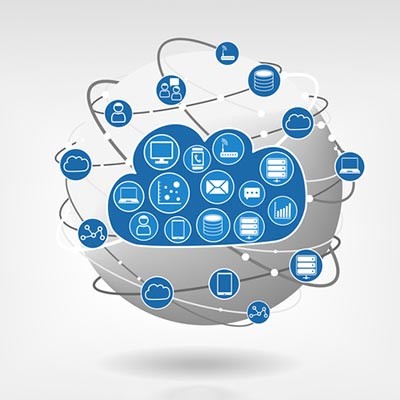One of the most important decisions you’ll make for your business is how it manages communications. These days, you have advanced tools that can help you do more with less. Today, we’re covering one of those tools—Voice over Internet Protocol (VoIP)—and how you can leverage its powerful telephony capabilities to level up your business game.
BNMC Blog
Technology is important to almost every organization nowadays. Still, depending on their situation, they may run into problems acquiring the technology that truly allows them to get over the hump and be as efficient as they possibly can be. Let’s take a look at three ways you can stretch your IT budget.
Businesses need a way to manage and maintain their technology, and if they don’t have internal IT departments, they might resort to outsourcing their IT outright. However, even businesses with technology professionals can benefit from working with a managed service provider. This approach, called co-managed IT, presents opportunities for considerable benefit.
While you’re reflecting over the past year of business, it’s time to also consider what your future will consist of from an operational perspective. By reducing the organizational clutter on your network, you might find that you’re paying for and hosting a lot of applications that are completely unnecessary—something that needlessly strains your bottom line.
Right to Repair has grown from a simple philosophy to a legitimate movement, with numerous states legislating measures to boost the rights of the consumers and businesses who ultimately pay for and use different pieces of technology every day. Let’s take a few moments to evaluate where the movement stands currently, as well as review what the right to repair would mean for businesses.
While the cloud has long been touted as a cost-effective catch-all for a business’s needs, it needs to be said that this isn’t always the reality…specifically, the cost-effective part. Some circumstances can lead to the cost of the cloud being too expensive for a business to wisely invest in it for its needs. Let’s talk about how the value that can be gained from the cloud can be gauged, and how this data can help you.
Artificial intelligence has gone through several developments in recent years, and with these developments come many concerned workers who think they might be out of a job as a result. With AI now moving into more practical and usable mediums, like writing, these fears are only reinforced and perpetuated by the Turing Test, which can measure the intelligence of a computer.
Businesses have been taking advantage of the cloud for some time now, and nine out of ten businesses operating today are using the cloud’s capabilities in some way or another. We feel confident enough to say that the future will certainly involve cloud hosting. Let’s look at some of the statistics and business trends to see how far the cloud has come, and how you could be taking advantage of it if you aren’t already.
Outsourced IT services are a very popular option for modern businesses, with options ranging from fully managed services to the traditional break/fix approach. However, when weighing these options, it is only natural that price plays a heavy part in the considerations. While we won’t go into any precise pricing, we do want to discuss some overarching trends concerning the two options and their associated costs to prove that managed services are, in fact, the better option for modern businesses.
The cloud has given businesses countless opportunities to change the way they operate on a day-by-day basis for the better. Granted, different businesses will utilize the cloud in different ways, meaning no solution will work quite the same for two different companies. Let’s go over what you need to know about how the cloud is a great investment for your organization.
One of the biggest ways that companies can take advantage of technology in the modern workplace is to utilize what is called virtualization, a process that makes aspects of their infrastructures more accessible. Let’s go over what exactly virtualization is, how businesses can benefit from it, and some examples of how you might use it.
The cloud is a common tool for businesses, but organizations tend to utilize it in different ways. Some use it to support a remote workforce, while others use it to avoid financing new hardware on a regular basis. Some even use it to fill in the gaps created by product and service demand. However your business uses the cloud, chances are that you will encounter issues if you do not take measures to adequately manage it.
So, you’ve decided to seek out external assistance with your critical business technology and its upkeep, and now you’re wondering how to tell which of your support options is going to give you the best value for your investment. While we may be biased, we still feel justified in our belief that—when compared side-by-side—a managed service provider will always be the better choice.
Many businesses will be looking to cut costs as the COVID-19 crisis heads into its second full month in the east. One way that businesses can cut a few dollars off the budget is to finally phase out their wasteful printing practices and adopt a more streamlined paperless strategy. Today, we will go over some tips to help you start moving away from the cost and headache of the printer.
There are certain technologies that - despite some issues that should be seriously considered - are inarguably useful to a business and its operations. One such technology is the notorious IoT, or Internet of Things. With the right preparation, the IoT can provide your business with a few advantages and benefits. Let’s review some of them.
Cloud computing has taken the business world by storm. It wasn’t so long ago that businesses had to pay in-house technicians good money to design, research, and purchase all the hardware needed to run an onsite server. This is an expensive endeavor, and for a small business may not always be at the top of a list of priorities. Today, cloud computing can solve that problem (and many more), but if you don’t closely manage your cloud costs, it can end up wasting capital. Today, we will look at cloud computing’s tendency for organizations to go overboard on their cloud offerings.






















